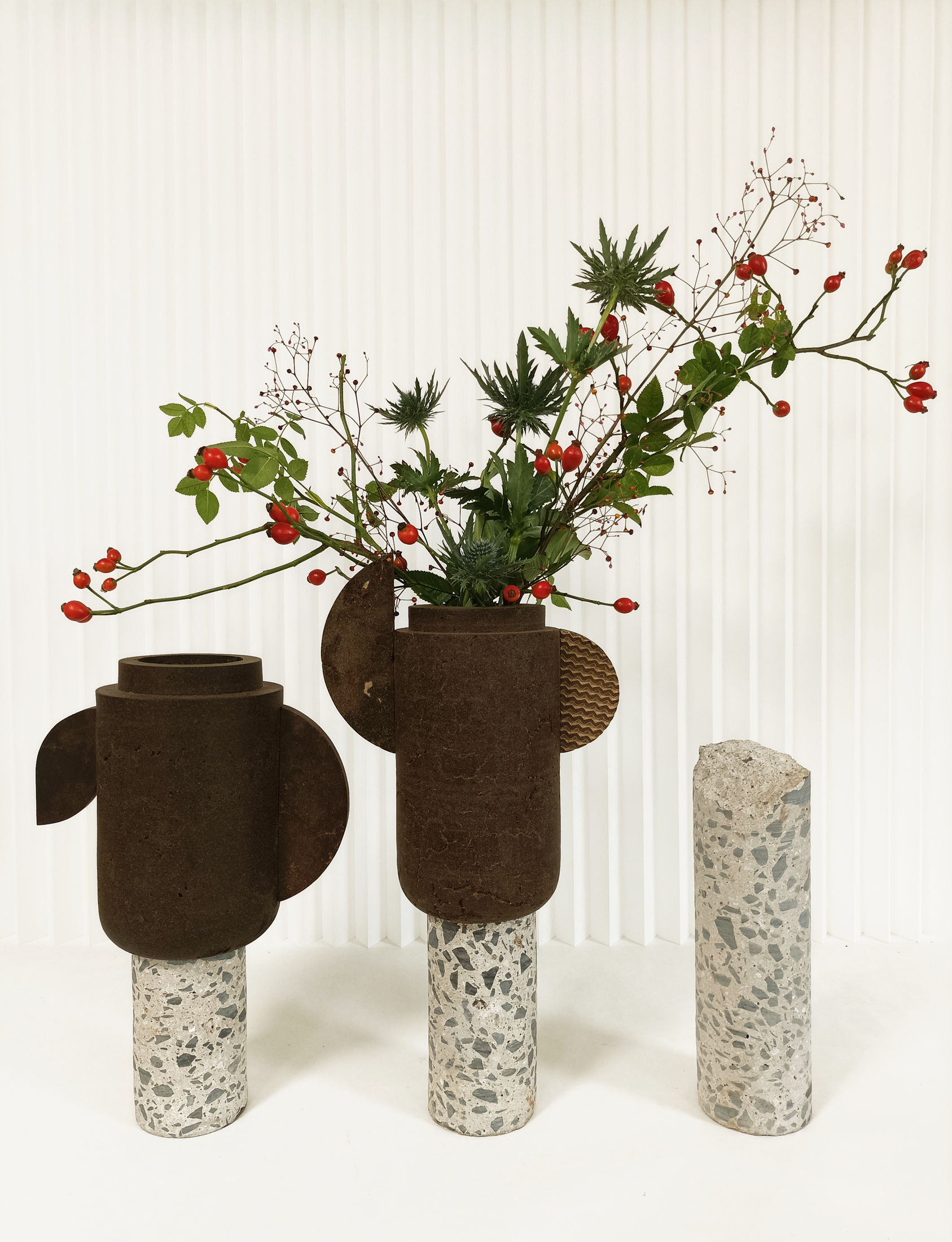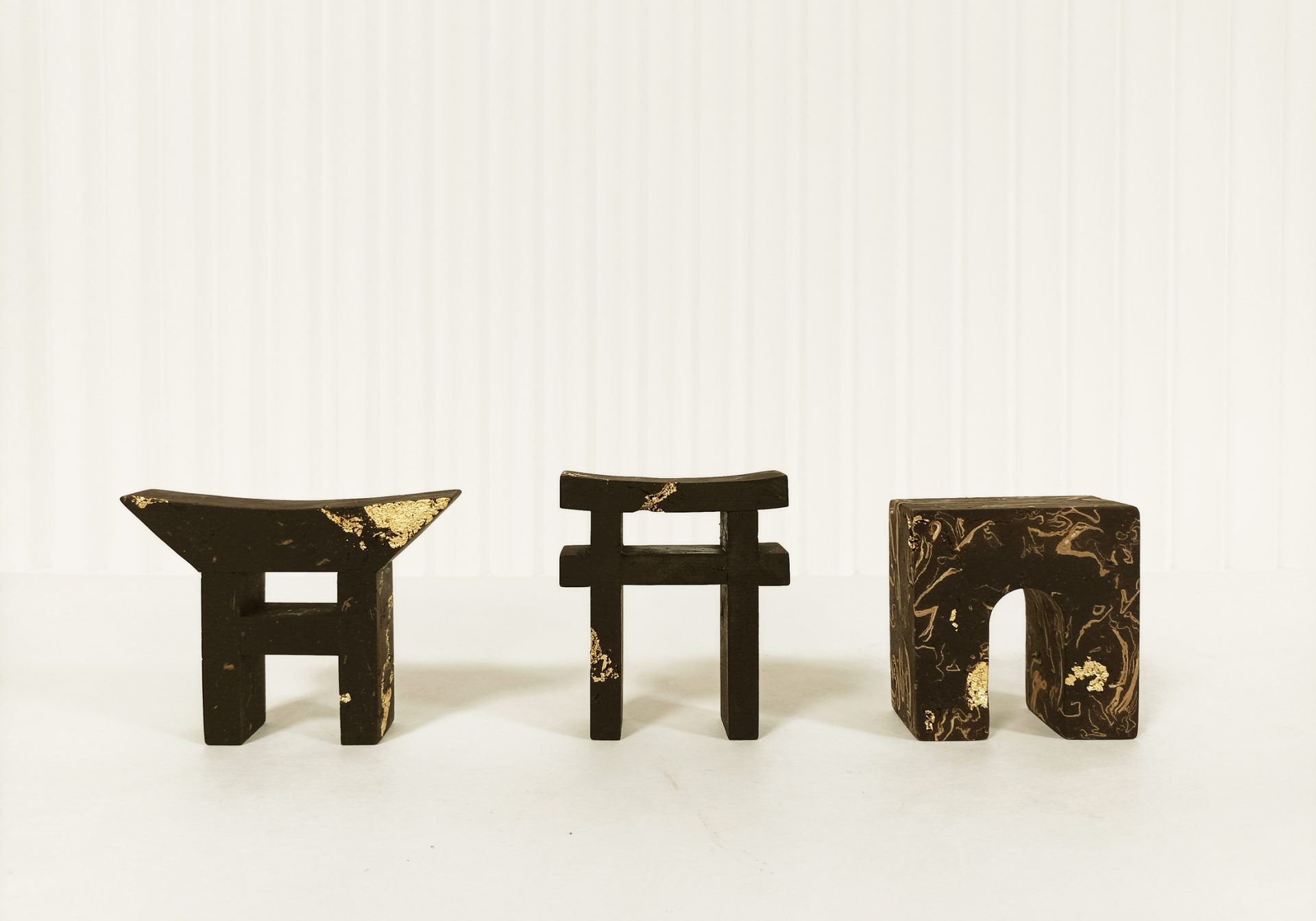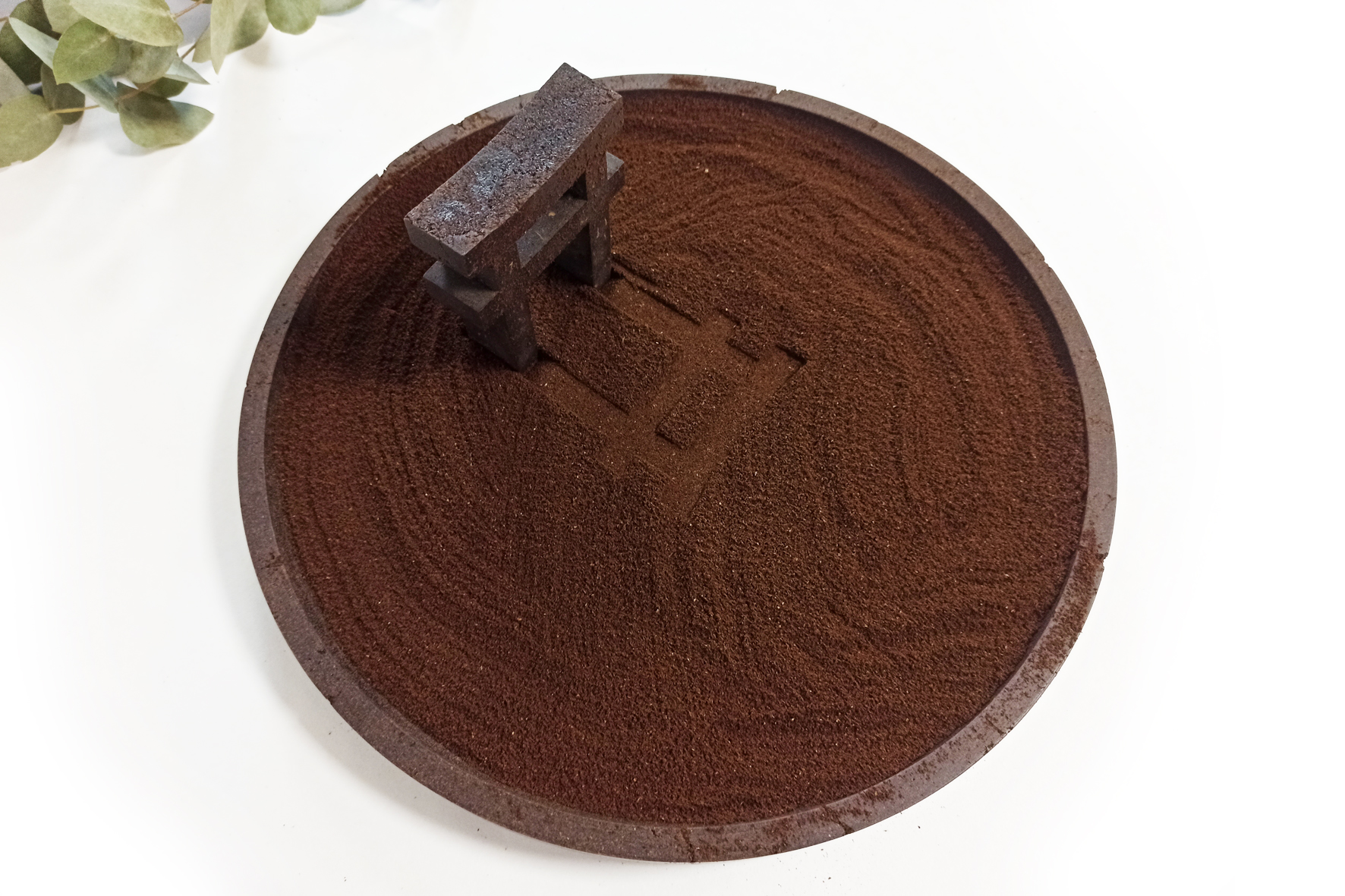Rituál pití kávy je o životních příbězích. Pro někoho je individuálním prožitkem, ale taky může být záminkou pro setkání. Může začít konverzaci neznámých lidí, ale je také důvodem na pauzu. Snad s nijakým nápojem se neváže tolik kulturních zvyků a odlišných rituálů jako je to u kávy.
Použitou kávovou sedlinu jsem se rozhodla uchovat v každodenních předmětech. Proces odlévání směsi kávy s pojivem začíná sušením a prosévání přes jemné síto, což považuji za jeho nejpříjemnější část. To poskytuje neobvyklý smyslový zážitek. Série předmětů, které jsou užitečné během konzumace, mohou také zvýšit koncentraci, probudit kreativitu a hravost. Zenové zahrady mají relaxační účinek, podobně jako samotné pití kávy.
Coffee zen gardens přepájejí západní a východní kulturu. Přinášejí vizuální, hmatový i čichový zážitek. Pracují s kávou ve všech odstínech a stavech – tekutém, pevném i sypkém. Kombinace soustružené kávy s javorovým dřevem odkazuje na tradiční řemeslo. Tvarosloví prvků a plnění zlatem odkazuje na Japonsko a zenová zahrada k duševnímu rozvoji.
Coffee drinking ritual is about life stories. For some it is an individual experience, for others it can be an excuse for a meet-up. It can start a conversation amongst strangers, or be a reason to take a break. Perhaps no drink is associated with as many cultural customs and different rituals as coffee.
The Coffee Zen Gardens connect the western and eastern cultures and they offer visual, tactile, and aromatic experiences. I created the zen gardens with a relaxation effect – similar to the coffee drinking itself. I work with coffee in all shapes and states: liquid, loose, and firm. The specific ways of using the coffee objects contribute to mental health maintenance and provide unusual visual, tactile and aromatic experience. Some objects are useful items in a coffee drinker’s kit, but all can also increase the level of concentration, awaken creativity and playful mindset.
Coffee Zen is a process collection – the sensory experience during the use is a s important as the process of creation. The material will change its characteristics over time. It will last long enough for its functionality but not too long to become obsolete. This is a new way the designers can experiment and create without making superfluous products.
The only thing needed here is time! The collection of everyday objects – vases and the zen garden components – is a long-term project of experimenting with waste materials (especially the used coffee grounds and other found objects). The special coffee ground and binding mixture is my own original material, which is recycled, recyclable again and also decompostable. It can be cast, kneaded like dough, filled, formed and bent – it air dries slowly. The objects were all created by hand, without any specialist tools or forms. In finishing I have used some traditional carpentry techniques like turning, cutting, and grinding.
The collection and furniture are the result of a long-term cooperation with Zbyšek Gaier, from the Veselá Hoblina carpentry, which is the producer of most of my designs.
Materiál:
kávová sedlina ručně lisovaná s ekologickým PVA pojivem, sušená na vzduchu
javorové dřevo, rýžová sláma
příměsi: papír, kořeny rostlin (například tymián)
Materiál byl vytvořen ručně, bez použití speciálních strojů nebo forem. Na dokončení některých kusů byli použité klasické truhlářské obráběcí techniky – soustružení, řezaní, broušení
Material:
Used coffee grounds pressed with PVA binding, air-dried; Porcelain, Rice straw. Stone, glass
Additives: Paper, Plant roots (for example thyme)







